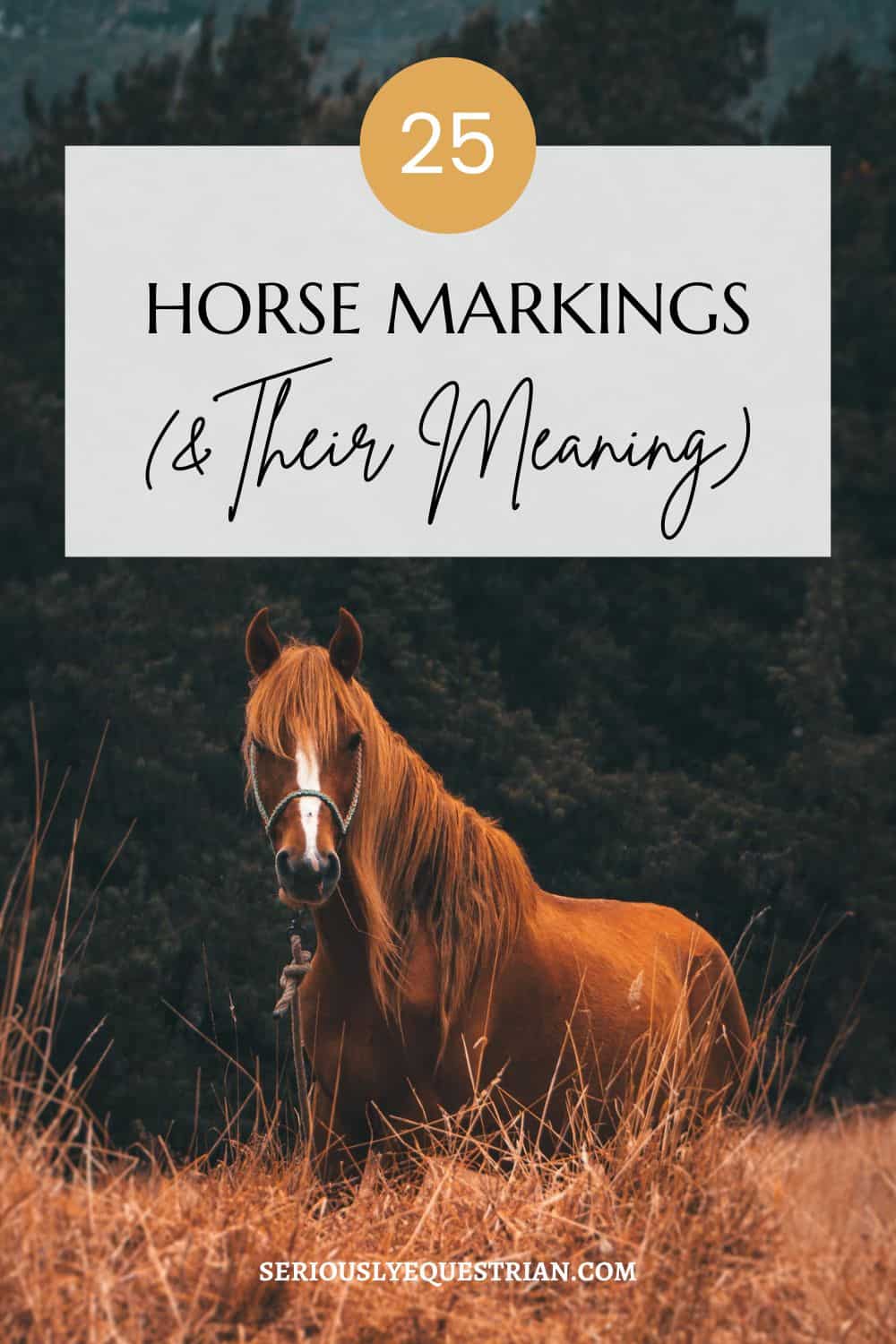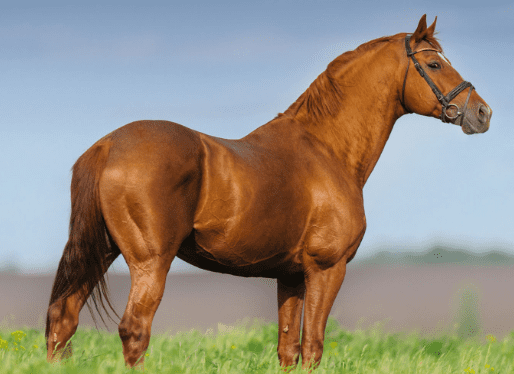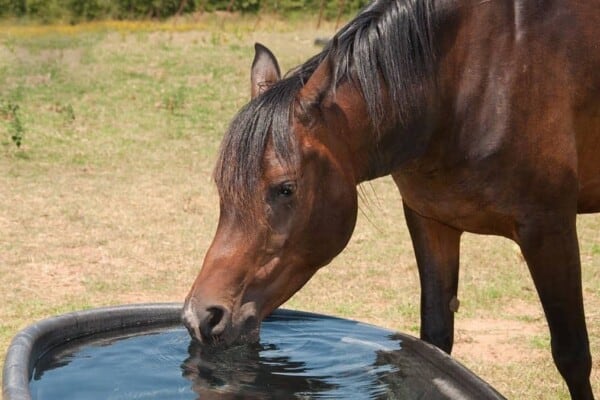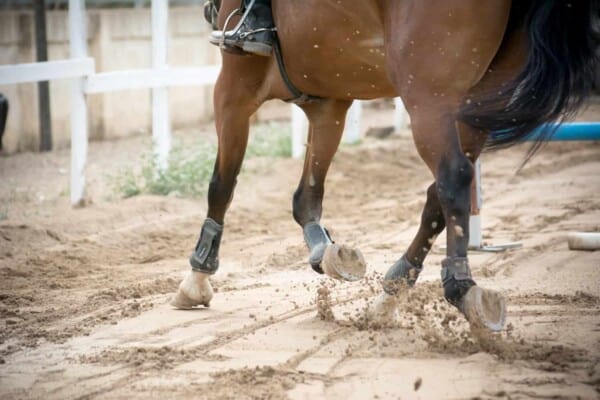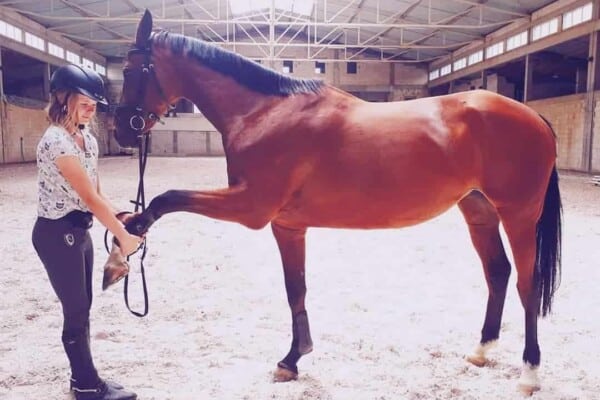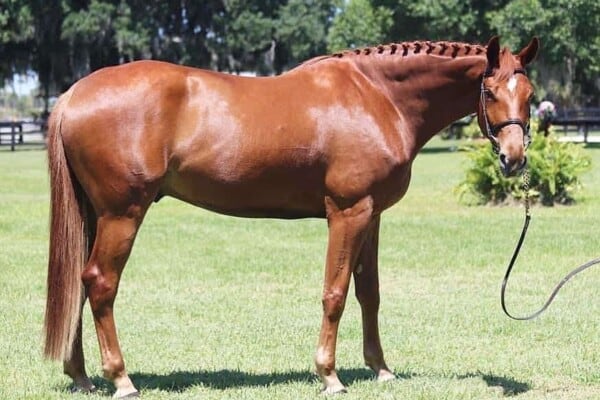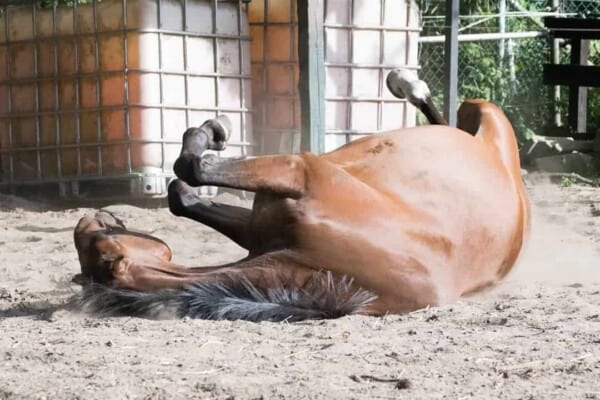Horses are beautiful creatures that we just can’t get enough of. They are majestic, stunning and a marvel to look at, but even though it may not look like it from the get go, they are all unique in their very own way.
People who don’t own horses may look at that statement and laugh it off, because after all, don’t most horses of the same breed technically look alike?
While members of the same breed will always follow the same blueprint as far as general characteristics are concerned, every horse will have a variation of a marking which makes them unique.
As such, in this article we will take a closer look at 25 of the most common markings that horses may have, while also showcasing the meaning behind these markings. Remember that each marking is different in its own right and your horse’s marking doesn’t need to be an exact copy of these.
With that being said, let’s hop right into the first marking of the day, aka:
1. The Star Marking
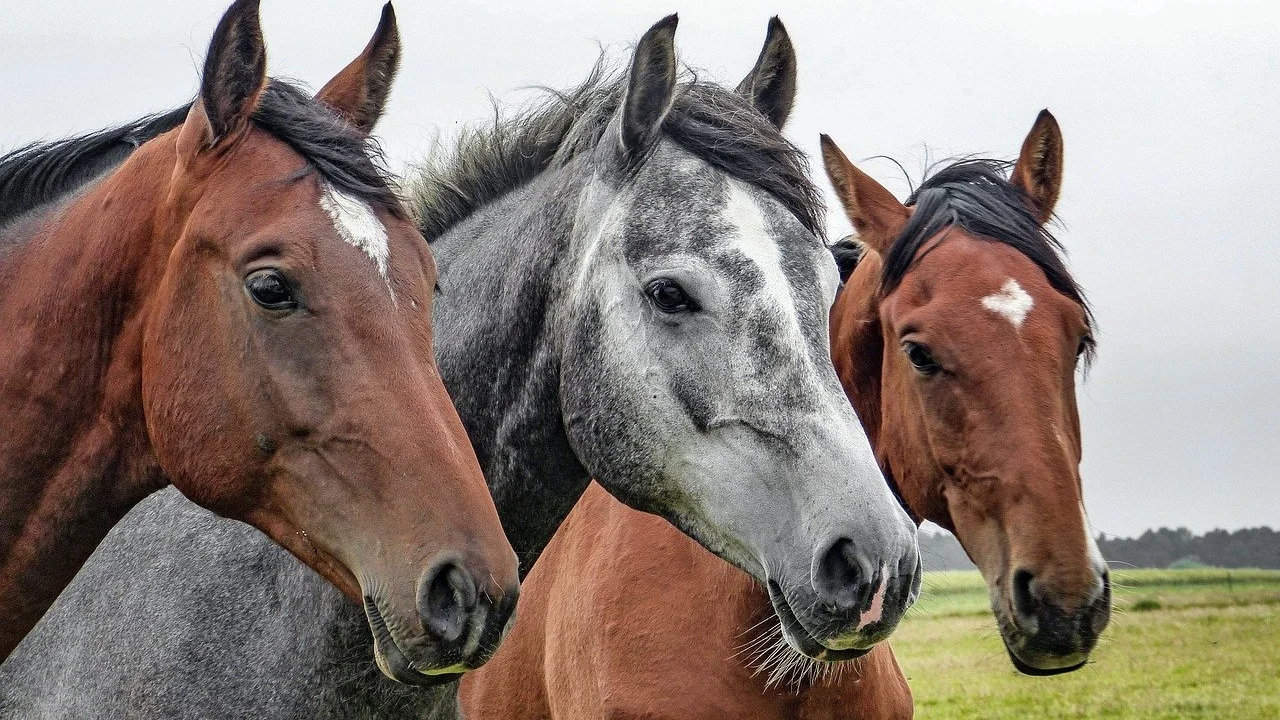
The star marking is the white sign that you can see on the forehead of your horse, right in between or right above their eyes.
Your horse’s star marking can vary in size and in most cases, it won’t even look like a star per se, but as long as it somewhat resembles this it should count.
As far as the meaning is concerned, stars are believed to be a symbol of divinity, so your horse may be a sign that someone above is watching over you.
2. The Snip Marking
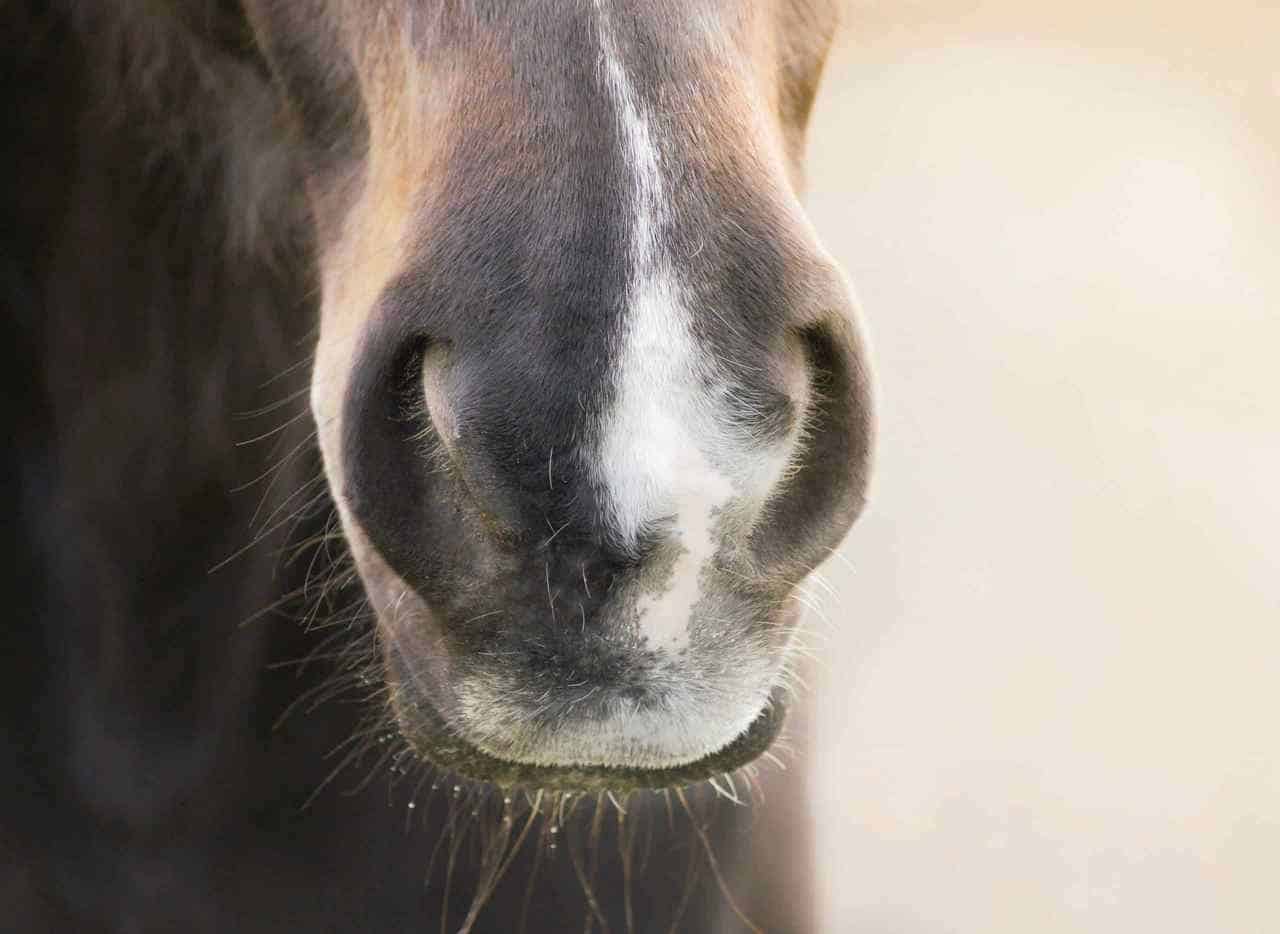
The snip marking is also very easy to tell apart from the other markings on this list, since it can be found on the lower part of the nose and it usually covers a pretty large area.
While there is no official meaning behind this marking, we do have to say that from our own experience with horses that had this marking, they are some of the friendliest and most gentle giants you’ll ever see for sure.
3. The Bald-Face Marking
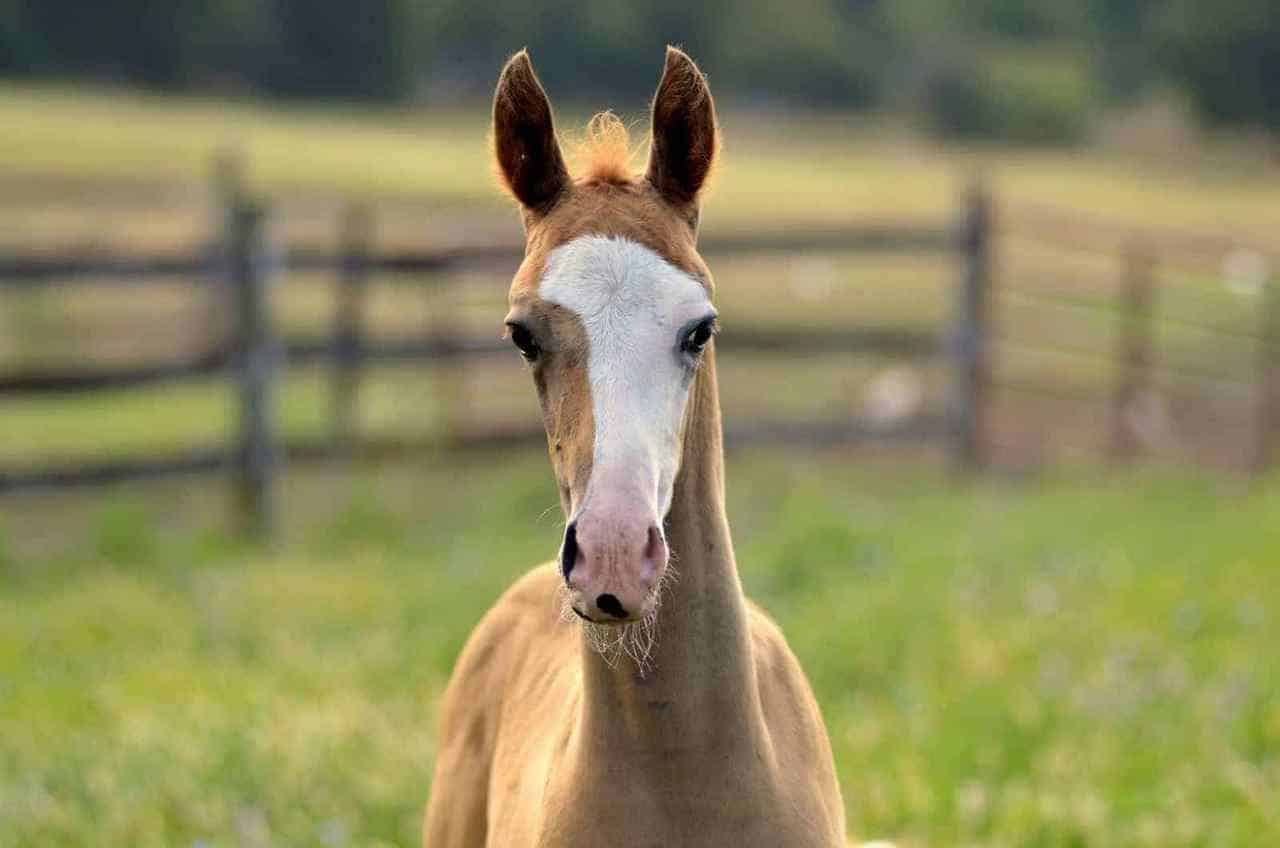
The bald-face marking is essentially a white marking that can be found all across the horse’s face. Interestingly enough, it almost appears as though this marking is stretching from eye to eye, all the way to the bottom of the horse’s face.
Biologically speaking, this marking showcases the fact that the horse was born without any pigment on their face, and it can be found most often times on Paint and Pinto horses. This usually means that your horse may also end up having one or two blue eyes.
4. The Blaze Marking
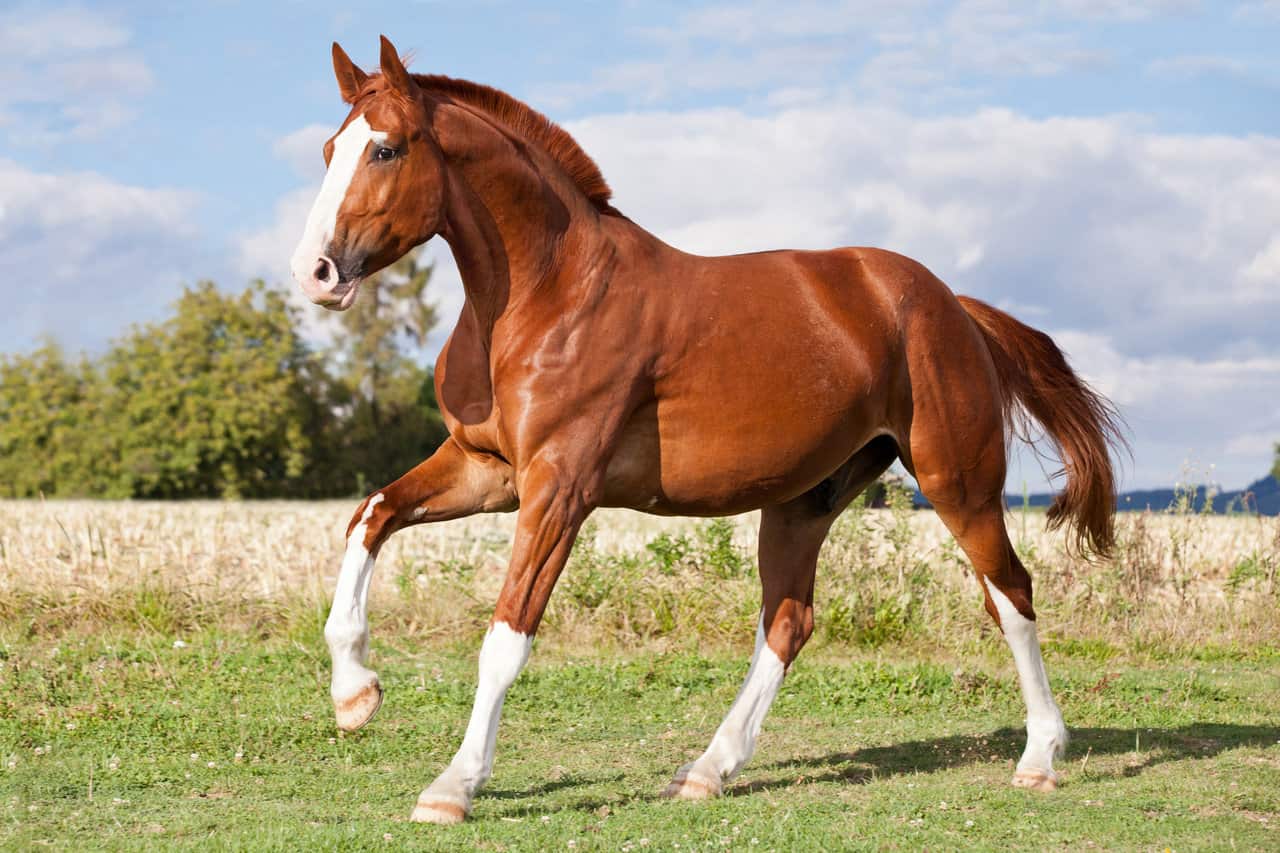
This marking is very common, as chances are that you most likely have seen at least one horse sporting something like this right in between their eyes.
It is important to say here though that this marking is very similar to a lot of other face markings, with the main difference being in the fact that these markings are a lot thicker than normal.
Interestingly enough, these markings are definitely thick, but they never stretch eye to eye like a lot of the other ones on this list, specifically the bald-face marking.
5. The Stripe Marking

The stripe is pretty self-explanatory, and most likely you’ve already seen it on plenty of other horses by now too.
In simple terms, the stripe is a white type of marking that can be found on the front side of your horse’s face, going down from their forehead all the way close to their noses.
It is pretty much just the narrow version of a blaze, and as far as we can tell, many horse owners have used this marking to tell their horses apart for a long time now.
6. The Ermine Marking
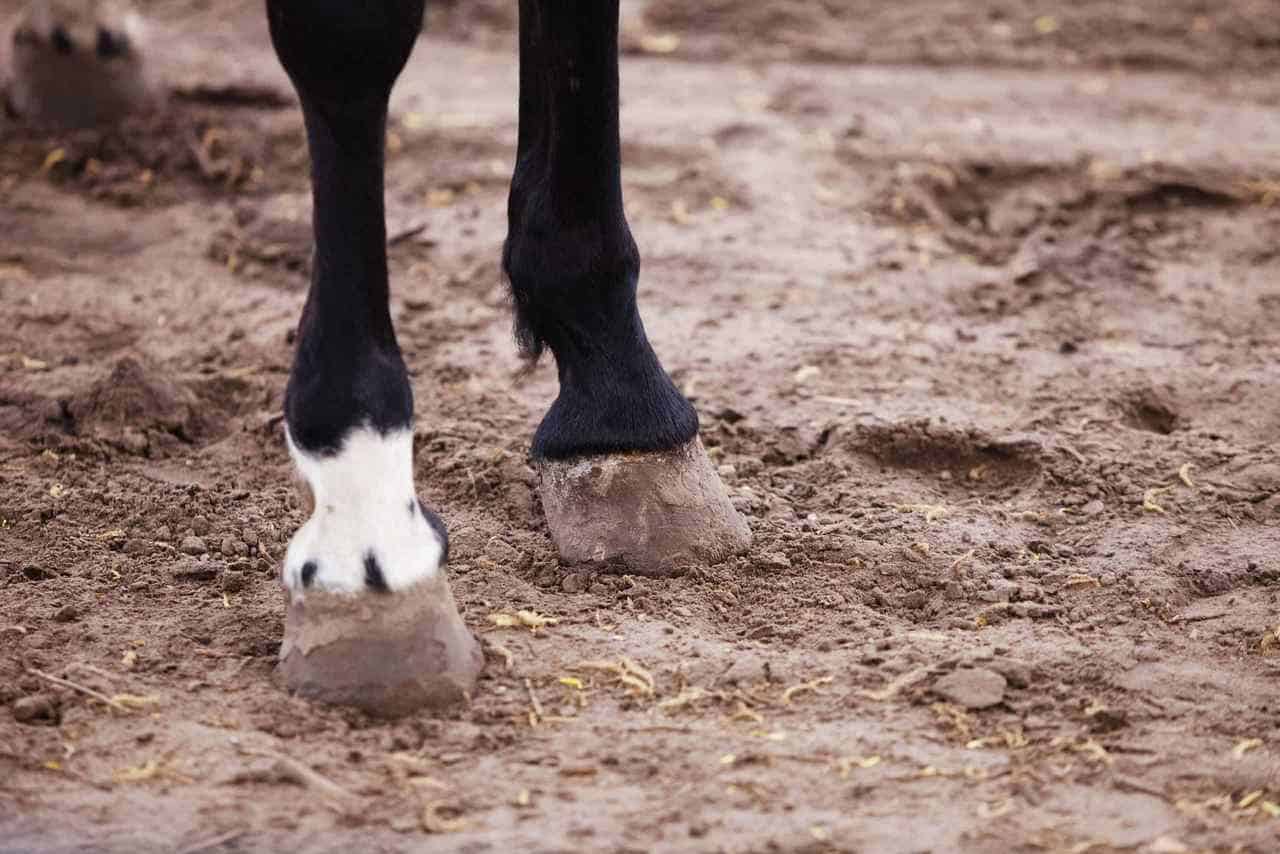
The ermine marking is essentially the small colored spot that you can see trailing out of your horse’s white spots. They are most commonly found inside of a star or blaze marking, and they’re usually very unique shaped.
While they are usually found on the horse’s face, they can also be found on their leg markings as well. You can find this marking on any colored horse out there, and funny enough, these spots are known for being genetic.
This means that your horse’s offspring will most likely end up with the same ermine markings as their parents, which is always nice to see.
7. The Coronet Marking
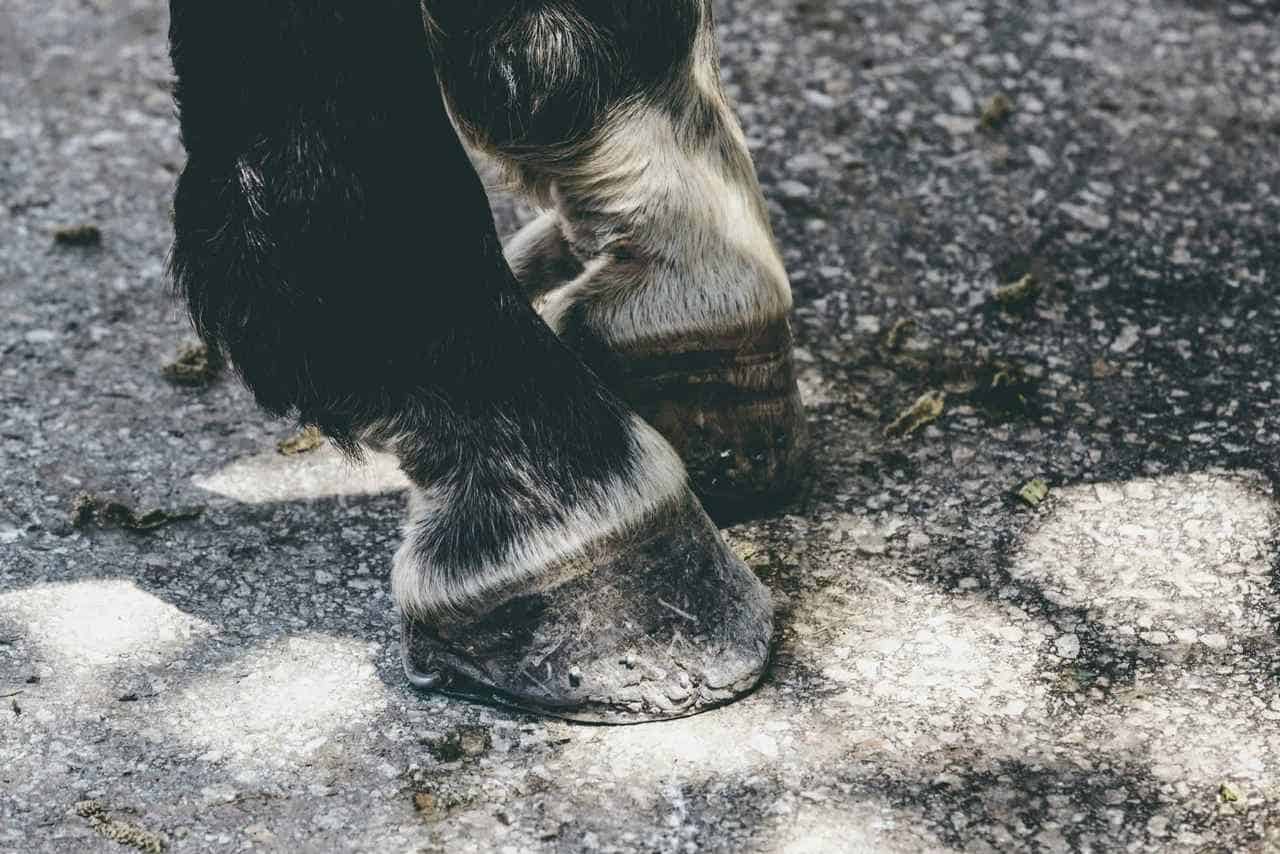
This marking can be spotted quite easily on the horse’s leg hair, right above the hoof. If your horse has any sort of white hair there, that is what we refer to as a coronet marking.
The reason as to why it is called a coronet marking in the first place is because that is what the upper part of the horse’s foot is called.
The coronet marking is a tad bit less common than the stripe for example, but it is still pretty easy to come across a horse that sports this marking.
8. The Pastern Marking
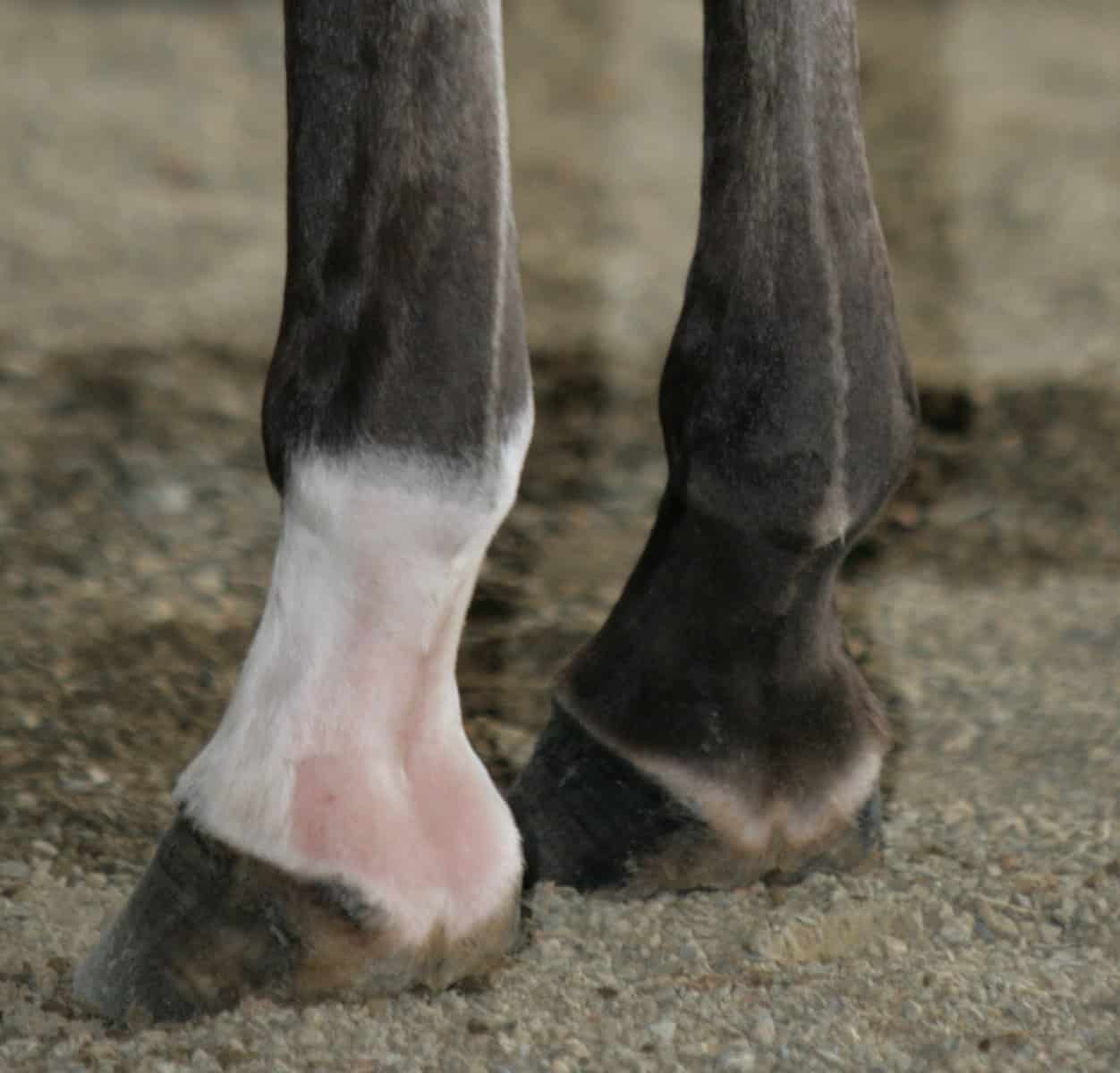
The pastern, when it comes to the anatomy side of things, is the part of the leg that you can see right in between the hoof and the fetlock.
As such, whenever this part of the horse has any markings on it whatsoever, we refer to these markings as pasterns.
You can also see partial pasterns every now and then on your horses, which is just white hair that can be found only on one side of the leg.
9. The Sock Marking
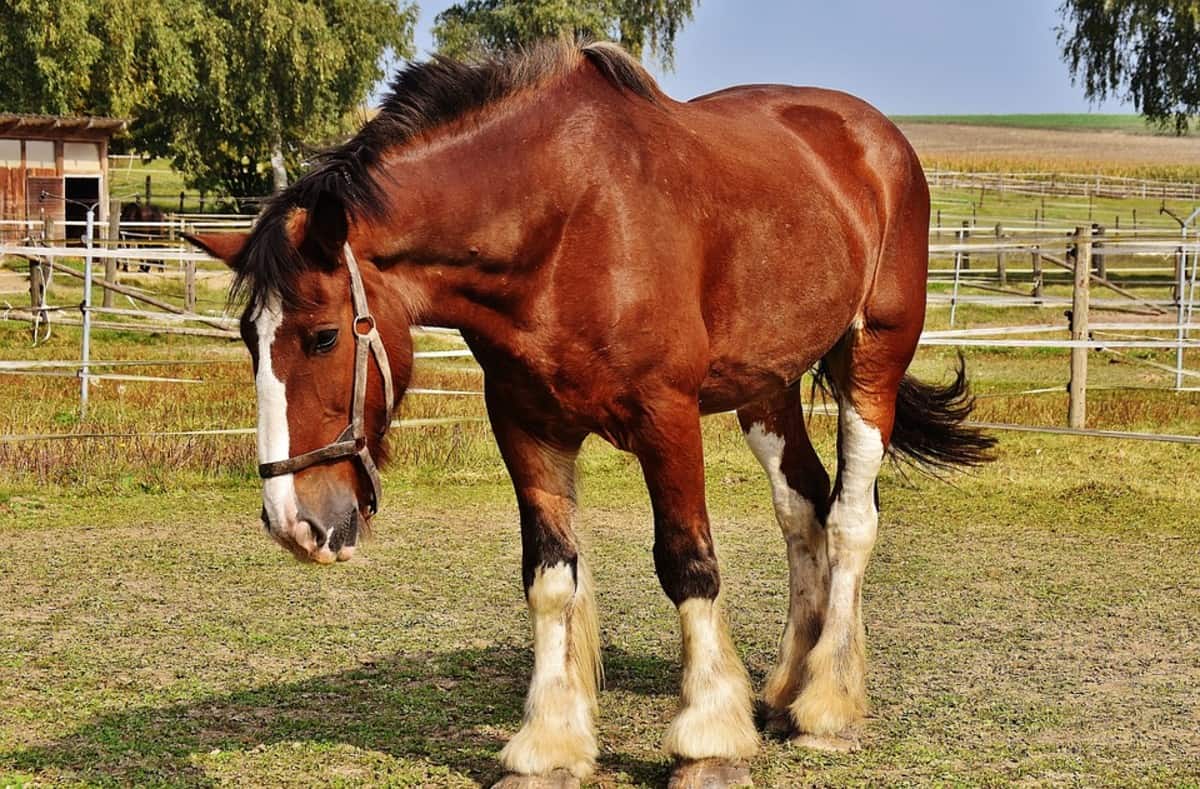
The sock marking is actually considered to be one of the most beautiful types of markings out there. This is because it is believed to add to the personality of the horse, and it can also lead the owner of the horse to purposefully name their four-legged friends “Socks”.
As the name implies, the sock marking extends to the middle of their lower leg, never passing by the knee level.
This white marking is very rarely found on all four legs at the same time, which means that if your horse does have four socks on, they may be way rarer than you thought.
10. The Combinations Marking
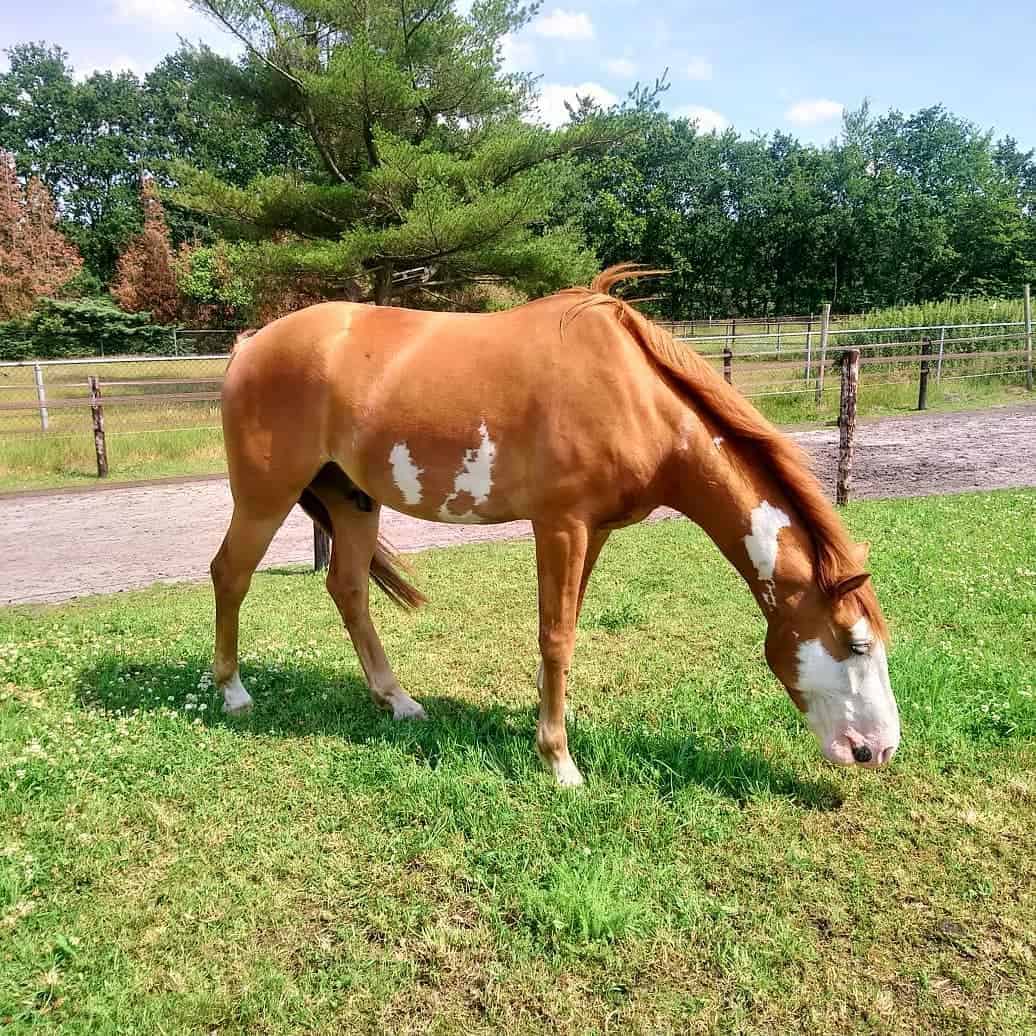
Combinations are again, very self-explanatory. This is actually both very common and very uncommon for horses.
That’s because combinations are very easily found on different horses, but the exact same combination is pretty much impossible to find to a tee.
One thing you need to remember though is the fact that throughout their life, the horse can end up losing these markings, especially the ones around their eyes. These markings also tend to show up randomly and before you know it, they’re gone like the wind.
11. The Boot Marking

It’s actually pretty hard to distinguish between the boot and the sock, but there is one easy way that you can make use of to tell them apart.
The key here is to look over how far up the leg the white hair actually reaches. If the white hair goes as high up as the knee, without actually touching it, you’re dealing with a boot. If the marking stops shy of that level though you are definitely dealing with a sock instead of a boot marking.
12. The Stocking Marking

If the white marking actually goes above the knee, then you are a hundred percent dealing with a stocking marking.
Just know that the stocking needs to start from the hoof and go all the way up, if it’s only around the knee then your horse doesn’t have a stocking marking.
You will need to inspect your horse’s knees thoroughly to see where the markings stop though, because sometimes the stocking will stop right above the knee. In this case it still counts as a stocking marking, but if it stops shy of it, you’re dealing with a boot marking instead.
13. The Half Stocking Marking
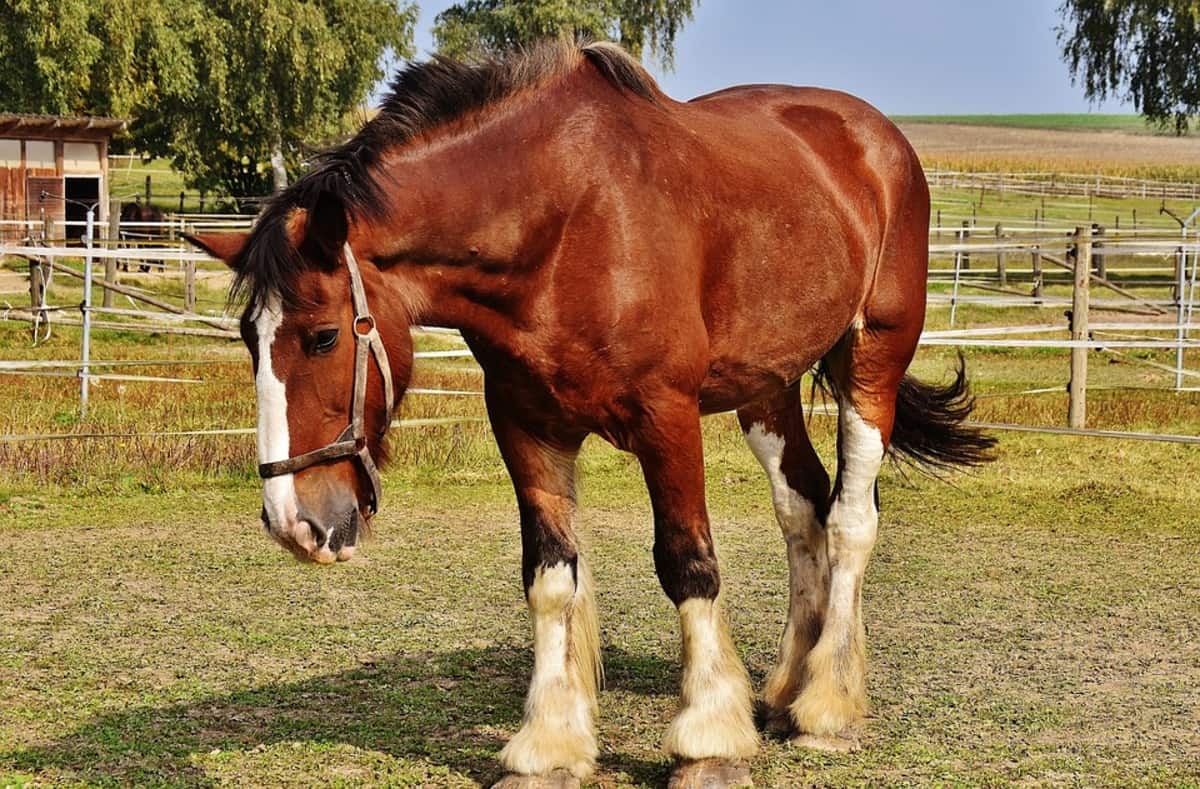
This is, as you can probably tell by now, very similar to the normal stocking marking, except for the fact that it only extends halfway up the middle of the leg, from the hoof’s edge.
This type of marking is a bit harder to come by than the stocking marking, but it is still a very beautiful way of identifying your horse from the rest.
14. The Bend-Or Spots Marking

This marking is often times referred to as a smut or as a grease spot, but it doesn’t mean that it’s not absolutely beautiful to say the least.
The Bend-or spots are dark spots that can be seen on most any part of the horse’s coat. Interestingly enough, the name of the bend-or spots markings comes directly from a thoroughbred that had that as his name.
That was the horse that popularized this marking, and as such, it is considered to be a sign of excellency due to how successful the original stallion was.
For the most part, you can find these markings on both Palomino and Chestnut horses, although they can also spring out of nowhere on other breeds too.
15. The Dorsal Stripe Marking
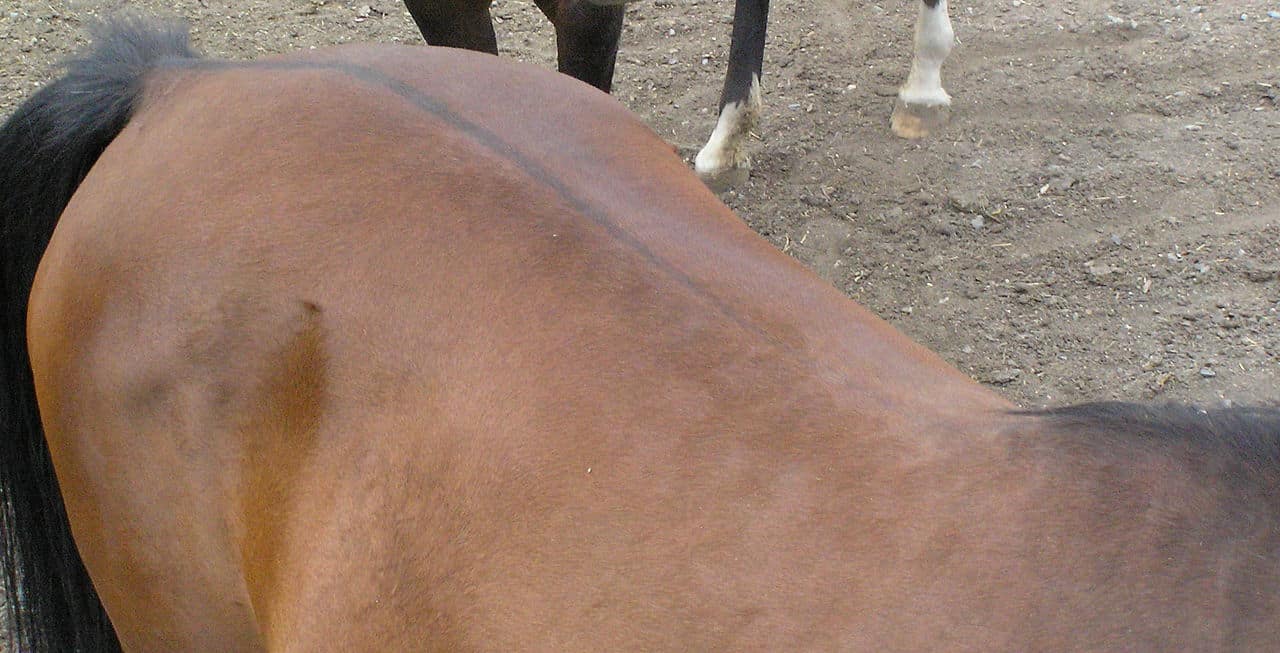
A dorsal stripe is a horse marking that can be found on a horse’s back. It is a darker strip of hair that spreads all across their back, stretching from their manes all the way down to their tails.
This is actually a very rare stripe to find on most breeds, except for the Mustangs. On this breed you have a pretty high chance of encountering it, and it is said to signify the fact that the horse is very fast and energetic due to most Mustangs sharing this characteristic.
16. The Shield Marking
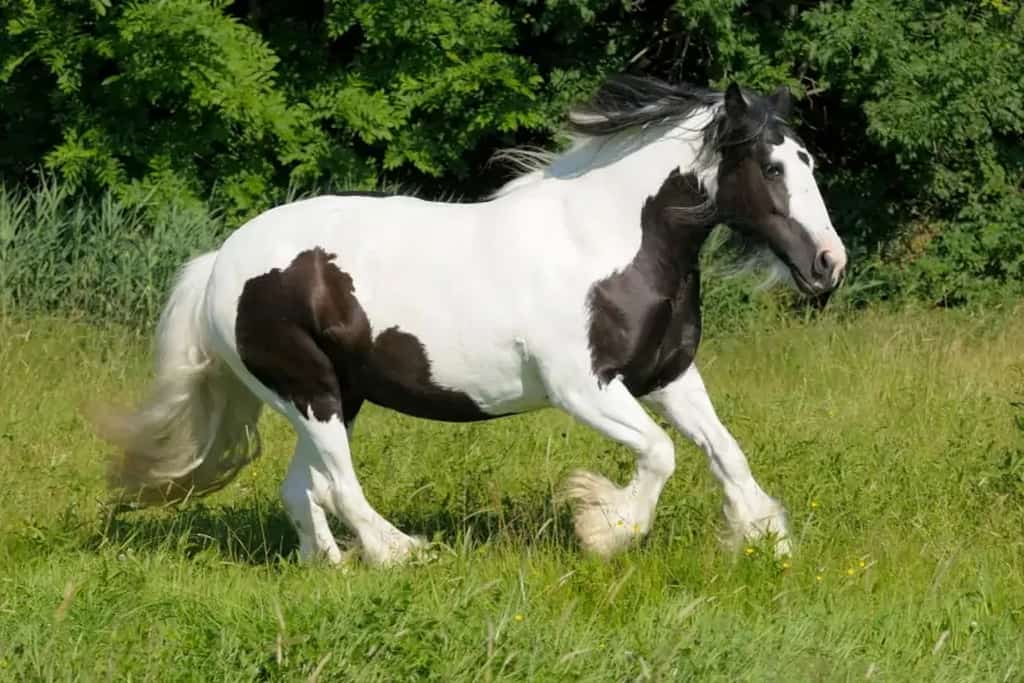
This is yet another one of those markings that is very common on a specific horse breed, and pretty much very hard to come by on most others out there.
In this case, you can find a ton of Pinto horses that share this characteristic, aka a large dark patch that is spread all across their chest.
The reason as to why it is so commonly found on Pinto horses is because they are usually mostly white colored, and as such the black chest immediately stands out.
17. The Medicine Hat Marking
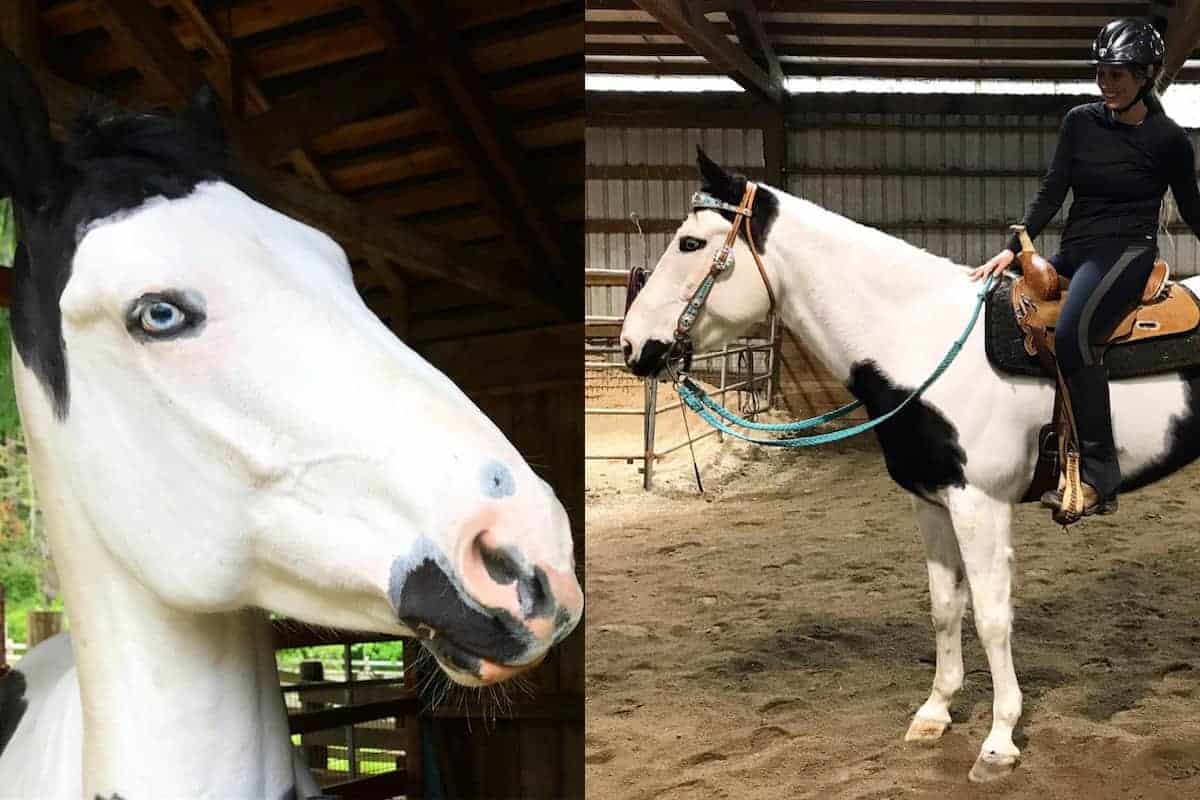
This is by far one of the rarest markings you’ll ever find on a horse. It can only be found on Pinto horses, and it can be spotted on top of the ears, covering most of their heads.
For the most part, horses that have this dark marking on their heads are considered to be special, because of how rare they are.
Because of this, the Native American riders that own a Pinto horse with this marking are believed to be protected from injury and death in battle.
18. The Irregular or Crooked Marking
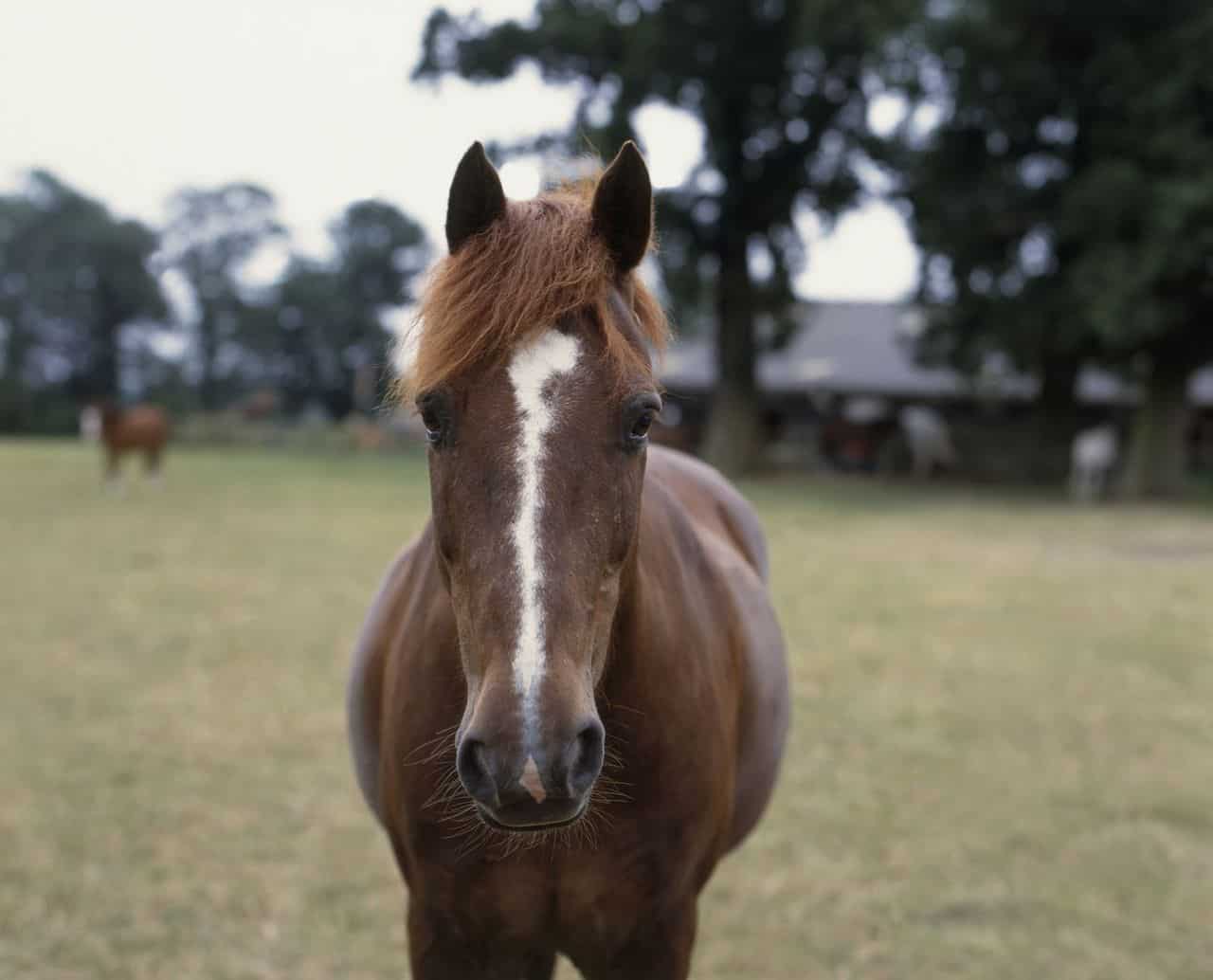
This marking is very easy to spot, as it can be found anywhere on the body, but it always has to be more or less bent or crooked.
This marking usually starts off as a strip or a blaze, but because of how crooked it is, it deserves to have its own category. It is quite commonly found on most breeds, but for the most part it is restricted to the head of the horse.
19. The Lip Marking
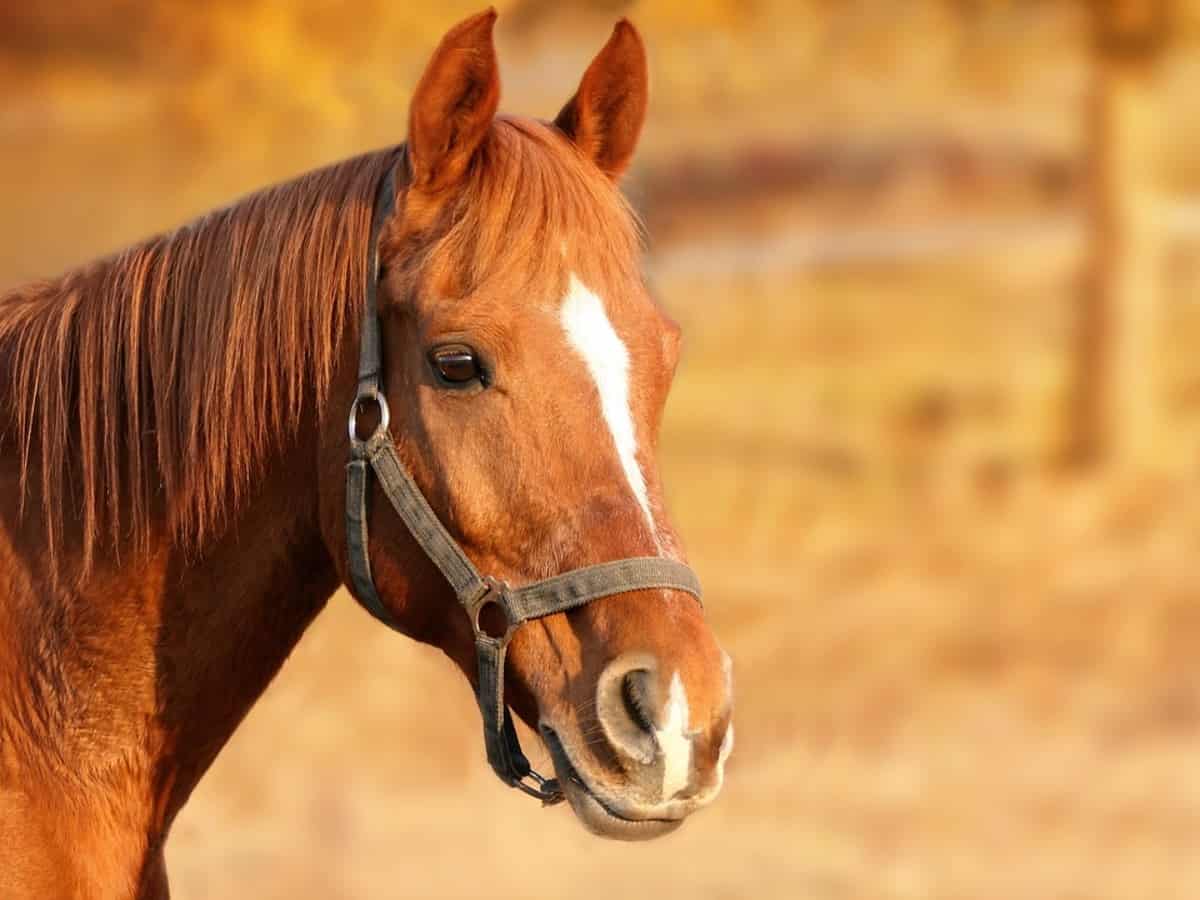
As the name implies, these markings are always found around the lip, although there is no actual name to refer to them as since they can be spread anywhere around that area.
As such, markings on the lower lip, on the chin or anywhere else there are referred to simply as lip markings.
Interestingly enough, this type of marking usually indicates the presence of the sabino color pattern, which is a specific white spotting pattern that features irregular edges all around the white areas.
20. The Faint Marking
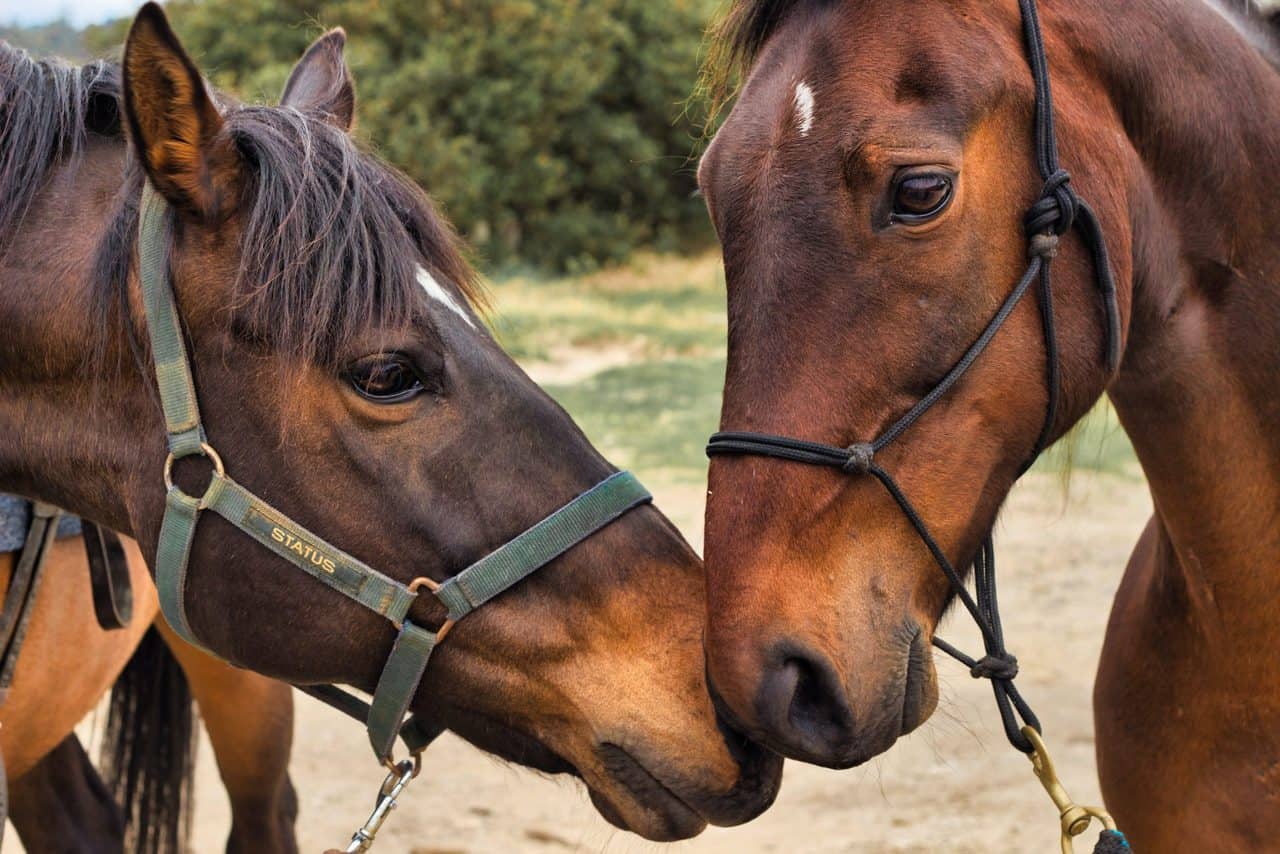
This is a very small but permanent marking that can be found anywhere around the body of the horse. It is usually very hard to spot, but once you do see the small peck you can tell that you’re dealing with a faint marking.
Despite the fact that they are so small, these markings are always permanent, so while the large markings tend to disappear as the horses age, these small white markings will continue to remain on the horse’s body all throughout its life.
21. The High White Marking

We talked about the white sock, boot and stocking markings, but one type that we purposefully left out of the question so far has been the high white marking.
This specific type of marking is essentially all the same as the other three, except for the fact that it extends past the stifle of the horse, all the way onto the belly.
This is very commonly found on the Sabino color pattern, and it is by far one of the prettiest markings on this list since it covers such a wide area to begin with.
22. The Connected Marking
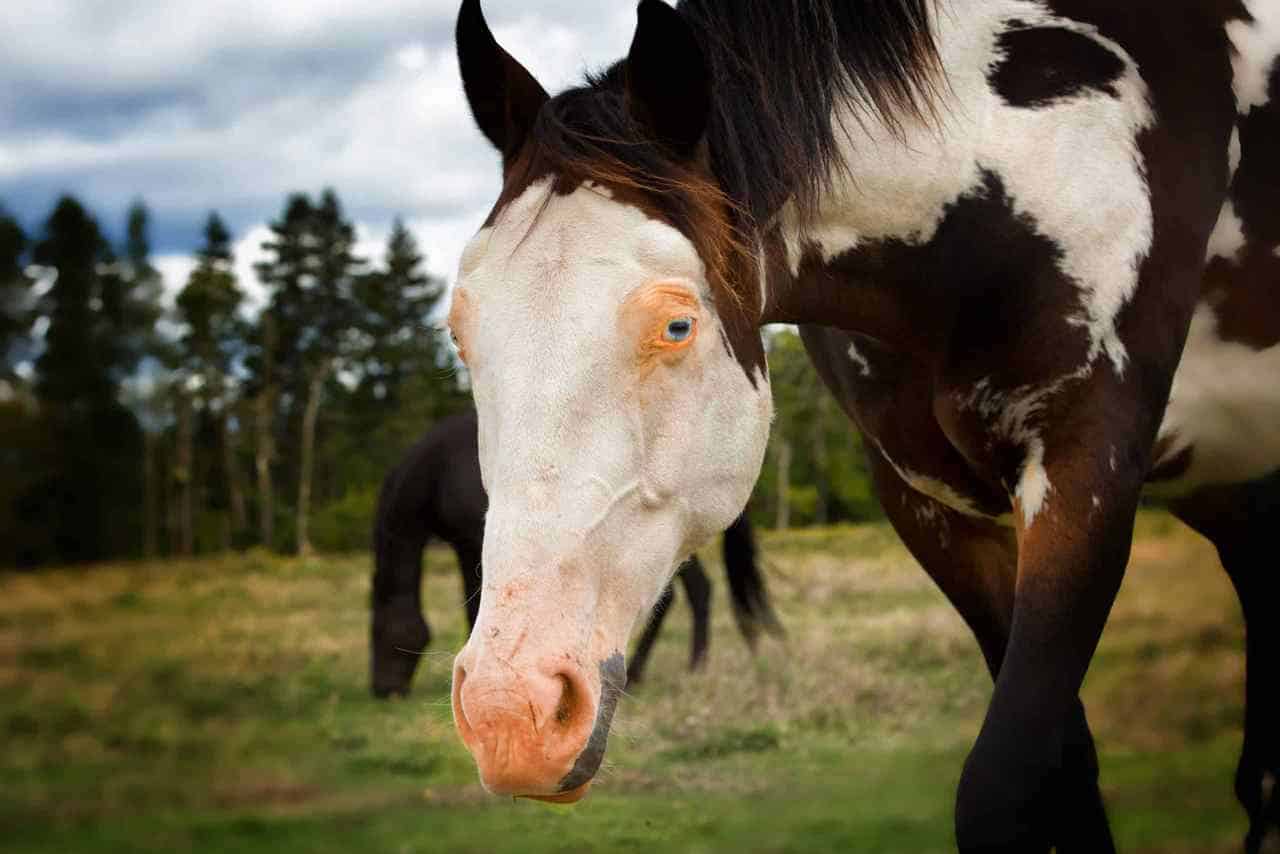
If there are multiple markings on your horse’s face and they tend to connect and intertwine amongst each other, then you are dealing with a connected marking.
This is a very beautiful trait that is entirely unique to your horse, since the connections made here are all random so the chances of another horse having this exact same pattern are incredibly low.
23. The Interrupted Marking
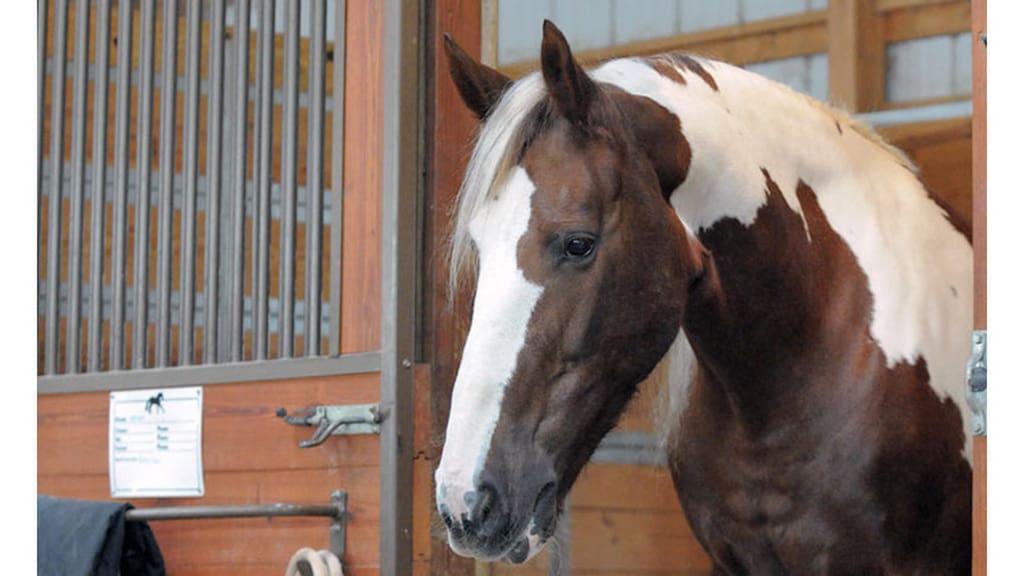
As the name implies, this marking is just a strip or a blaze that isn’t connected all the way through.
Instead, you can see that the line is broken either in one spot or multiple spots as it runs down the horse’s face.
24. The Birdcatcher Marking

Birdcatcher markings are named after yet another Thoroughbred that was known for having a ton of white specks all across his flank and tail.
As such, these white specks, which can be found on any part of the horse’s body, are referred to as Birdcatcher markings.
They are usually the size of a quarter and despite the fact that they were popularized by Birdcatcher, they are not specific to any breed whatsoever.
25. The Roan Horse Markings

These are not natural markings, quite the contrary. These markings can be found on Roan horses, and they are represented by black spots running across different sections of their bodies where they’ve been hurt.
This is a very sad sight to see, as it means that the horse has been scratched or otherwise hurt, which has led to the horse’s hair darkening.
Conclusion
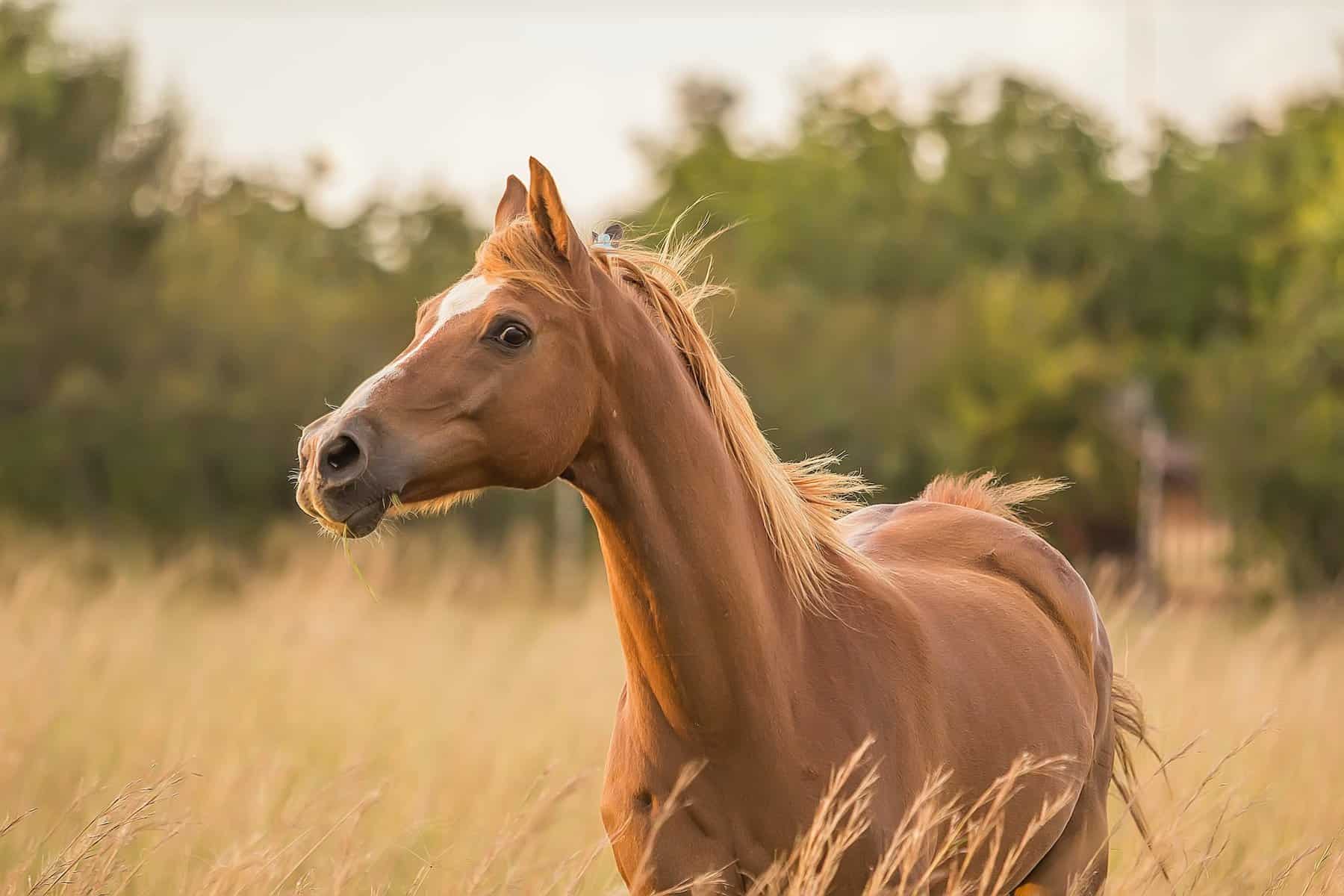
These are all of the most common markings that you can see on horses nowadays. While there are 25 of them in total in this list, and it is pretty common to come across them, usually the marking itself is very much so unique to the horse.
What we mean by this is the fact that even though the horse’s pattern might be hereditary, there are small changes from horse to horse, making each and every marking stand out in its own way.
So, if your horse has anything similar to these markings right here, just know that they are special, and they deserve an extra pat on the head for being such a unique specimen.
Contents
- 1. The Star Marking
- 2. The Snip Marking
- 3. The Bald-Face Marking
- 4. The Blaze Marking
- 5. The Stripe Marking
- 6. The Ermine Marking
- 7. The Coronet Marking
- 8. The Pastern Marking
- 9. The Sock Marking
- 10. The Combinations Marking
- 11. The Boot Marking
- 12. The Stocking Marking
- 13. The Half Stocking Marking
- 14. The Bend-Or Spots Marking
- 15. The Dorsal Stripe Marking
- 16. The Shield Marking
- 17. The Medicine Hat Marking
- 18. The Irregular or Crooked Marking
- 19. The Lip Marking
- 20. The Faint Marking
- 21. The High White Marking
- 22. The Connected Marking
- 23. The Interrupted Marking
- 24. The Birdcatcher Marking
- 25. The Roan Horse Markings

